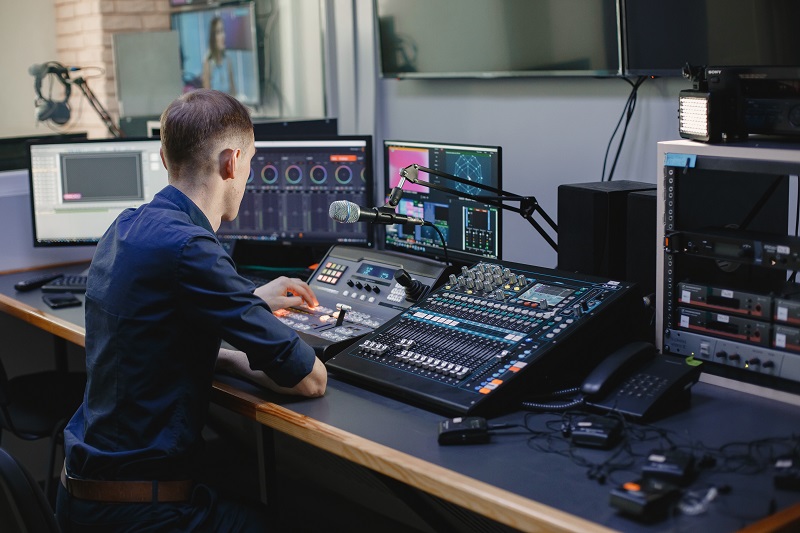Troubleshooting and repairing studio monitor issues is like fixing a broken puzzle. With the right guidance and tools, you can easily restore the sound quality of your studio monitors.
In this article, we'll guide you through: - Common problems - DIY repairs - Professional repairs - How to choose a repair service and warranty for quality results.
Troubleshoot common studio monitor issues, such as speaker, amplifier, and mixer problems, to diagnose and fix the issue.
Check for damage and loose wiring on the speakers, as this can cause distortion or no sound.
Low volume or no sound can indicate an amplifier issue, so check the volume pot and PCB for damage.
Mixer issues can affect the routing of audio signals, so check the settings and wiring.
Understanding these issues can help fix the problem.
You can save money by repairing your studio monitors yourself or seeking professional assistance.
DIY repairs can be cost-effective for simple issues like replacing blown fuses and damaged parts. Research the necessary tools and parts before starting and look for online tutorials to guide you.
Professional repairs are recommended for complex or technical problems. Research and choose a reputable repair service and get a quote before agreeing to repairs. Make sure they offer a warranty in case of any future issues. Customer service should also be responsive and easy to communicate with.
Consider the location of the repair service to make drop-offs more convenient.
DIY repairs can be a great way to save money and fix simple issues with your studio monitors. While researching and gathering necessary tools and replacement parts is important, online resources like video tutorials and forums can guide you through the process. For example, if you hearing annoying monitor buzz, you can look at this helpful article: https://youraudiofix.com/why-is-your-studio-monitor-buzzing/
Here are 4 tips to get you started:
Know the potential issue and identify the necessary tools.
Familiarize yourself with the components of your studio monitors.
Research and purchase replacement parts, if needed.
Take your time and follow instructions carefully.
With a bit of technical knowledge and patience, DIY repairs can be a great way to save money and ensure your studio monitors are running smoothly.
For complex or technical problems, professional repairs are often the best option. It's important to research and choose a reputable repair service. Reviews and recommendations from other professionals can guide your selection.
Make sure to get a quote before agreeing to repairs. A warranty provides peace of mind for future issues, so check if the repair service offers one. Customer service should also be responsive and easy to communicate with.
Location can also be a factor in choosing a repair service, especially if you need to drop-off the monitors.
Professional repairs can be costly, but they guarantee quality work for complex issues.
Finding a reputable repair service and a good warranty is key when fixing studio monitors. It's important to research and choose a trustworthy repair service, check for a warranty, look at customer service, and consider the location for convenience. Here are a few tips to help you make a quality choice:
Read reviews and recommendations from other professionals.
Get a quote before agreeing to repairs.
Make sure customer service is responsive and easy to communicate with.
Look for a warranty to provide peace of mind for future repairs.
Doing your research and selecting the right repair service and warranty will ensure quality repairs and peace of mind.
The best way to clean studio monitors is to use a soft, lint-free cloth and a mild, non-abrasive cleaner. Avoid using water or harsh cleaners, as they can damage the monitors. Gently wipe the surfaces and avoid getting the cloth too wet. For tough build-up, use a soft-bristled brush.
Don't let your monitors go too long without servicing them! After all, you don't want to be stuck with a broken speaker - that's no fun. So, make sure to service them regularly and you'll never have to worry about sound quality again.
To keep studio monitors in good condition, regular maintenance is key. Check connections, inspect for damage, and clean the exterior. Replace worn parts, and check the settings and wiring. Taking these steps will help keep your studio monitors running smoothly.
Yes, there can be additional costs associated with professional repairs. Be sure to ask for a quote before agreeing to repairs and find out if the repair service offers a warranty. This can help you plan for any additional costs.
No, it's not always necessary to replace the entire studio monitor. In some cases, repairs or replacements of specific parts might be needed to fix the issue.
